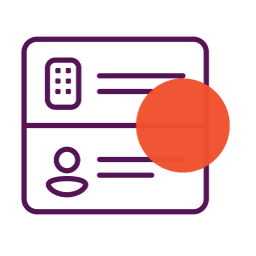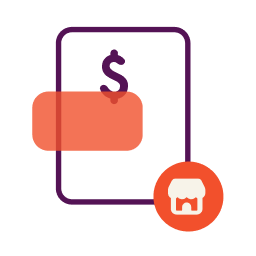One of the biggest frustrations with credit scores may disappear in the not-too-distant future. That pain point? The fact that you can have money in the bank to pay your bills, but not have a strong credit score. As a result, you have trouble qualifying for credit, even if you are confident you can handle the payments.
“You may consider yourself financially responsible because you pay for purchases with cash or a debit card, but be a ‘credit ghost’ to the credit bureaus because your credit reports don’t list credit cards, an auto loan, a mortgage or other accounts,” says Nav CEO and Co-Founder Levi King.
A brand new credit score, called UltraFICO, is FICO’s latest attempt to solve this problem. Here’s how it works: the consumer agrees to allow access to their banking accounts (checking, savings and/or money market) and that information is used along with credit data to calculate an UltraFICO score.
How does banking information affect the score? “It is a blend of both positive information such as how long the account has been open and how active the account is, as well as some negative information such as whether the account has had a negative balance,” says David Shellenberger, Senior Director of Scores and Predictive Analytics at FICO. “We find that this type of information is indicative of how a consumer manages their credit obligations.”
Here’s a likely scenario where the UltraFICO score may be used: a consumer applies for credit but her FICO score falls below the lender’s minimum threshold, so she agrees to allow access to their bank account information in order to get another shot at approval. The lender will then get the new score, the UltraFICO score. It may help her qualify— or it may not— depending on how she has managed her bank accounts.
The UltraFICO score is being offered by FICO in partnership with Experian and Finicity. Experian is one of the three major credit reporting agencies, so the credit data that is used to calculate an UltraFICO score will come from Experian. Finicity powers the ability to transmit consumer banking data so that information can be included in the score. FICO calculates the score.
Consumers who are most likely to benefit from this analysis are those with credit scores on the lower end— high 500s to low 600s on a scale of 300— 850 where 850 is the “best” score, indicating low risk. This group often includes those who are newer to credit, such as younger consumers, older Americans who avoid credit and debt, and immigrants.
According to FICO, some 160 million Americans apply for credit each year and of those about 15 million consumers have what are often referred to as “thin” files. (Here, that means four or fewer trade lines reported on their credit reports, or a credit file opened less than six years ago). FICO estimates that about 7 million of those could see a credit score increase using the UltraFICO Score driven by a healthy balance of $400 or more a month and no negative balances in their checking/savings account in the past 3 months. For about 4 million of them the increase would likely be significant: 20 points or more.
This new FICO score appears to be part of a larger trend to use data obtained with an applicant’s permission. In small business lending, for example, it’s not uncommon for lenders to ask for the most recent 6— 12 months worth of business bank statements, or to request access to the small business owner’s business bank account to review account activity.
For those who would rather not share bank account activity, rest assured the UltraFICO score uses permission-based access only. In other words, your bank account information can’t be scored unless you say so. And if you do, that data will not become part of your credit report with Experian.
Giving the consumer more control over the data they choose to share with lenders isn’t brand new. Already, Bloom has been acting as an intermediary between consumers, lenders and financial aggregators. Using blockchain technology, they offer a platform where an individual can agree to share his or her information, such as bank account activity, with a participating lender. The lender then integrates that information into its scoring model and verifies its authenticity without going through a credit bureau.
“(Consumers) already have access to a lot of information that is not in credit bureaus,” explains Bloom Co-Founder Jesse Leimgruber. Examples include income, utility payments, checking and savings accounts, and more. Traditionally that information has been difficult to verify and so it hasn’t been used for smaller-dollar consumer loans. The Bloom platform aims to simplify that by directly connecting the customer and the lender. Bloom doesn’t touch the data at all; it simply provides the technology powering the exchange of information.
UltraFICO will be launched as a pilot program in early 2019 with roll-out expected in mid-2019. As always, lenders choose which credit scores to adopt, and as a result, there are many different credit scores a lender may choose to use.
This article was originally written on October 24, 2018 and updated on January 30, 2020.



Someone stole my business checkbook writing checks all over town using there own I’d. Made police report. I call Bank closed acct .it was realitively new LLC I’m only signer the bank chose to close my acct. Over this and does not want my business. I don’t carry high balance. So what is this going to do I must go to new bank any recommadatiind
I’m sorry to hear what you’ve been through.
First, I wouldn’t worry too much about ULTRAFico. It’s in the early stages and it’s opt-in which means you’d have to agree to have your bank information scored. You aren’t likely to encounter it any time soon.
But I would suggest you talk with your bank and ask them if your business account has been been reported to any databases for overdrafted accounts and/or fraud. Traditionally, overdrawn checking accounts get reported to Chexsystems or Telecheck. Those are consumer reporting agencies, though, so I am not sure if they will have your business account information. It doesn’t hurt to check: you can request a report from each of those for free to see whether your account information was reported.
Once you’ve done that you can try opening another checking account. If you get turned down, ask why to see whether this account has been reported somewhere.
I hope that makes sense. It’s more work with fraud on a business account because they generally aren’t covered by consumer protection laws.